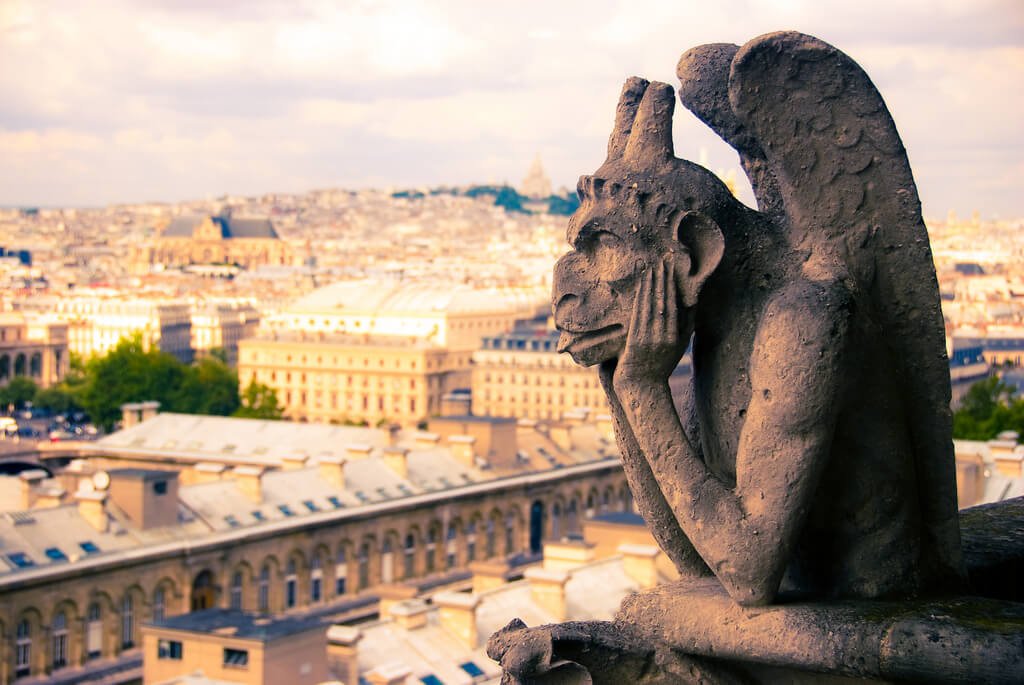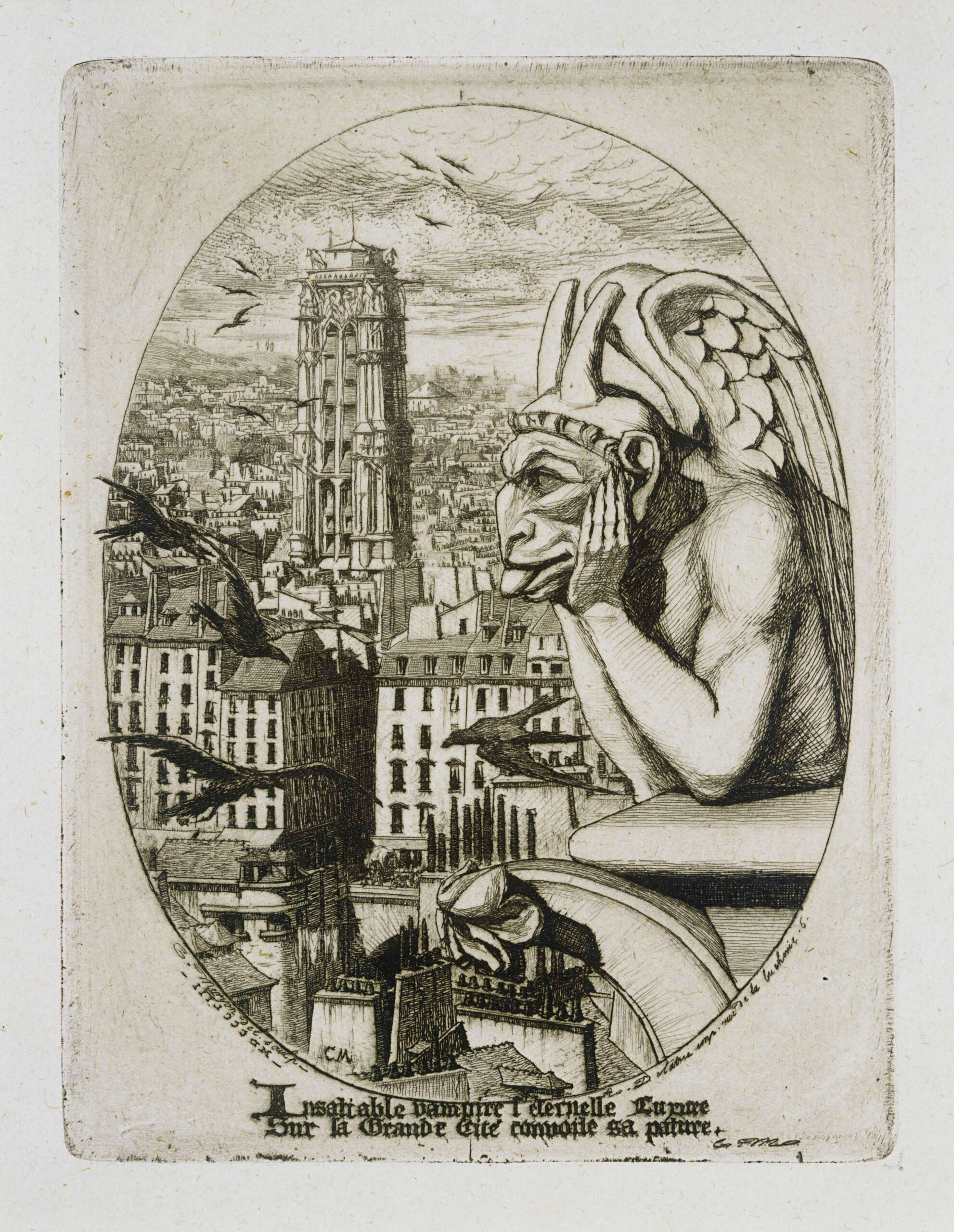While doing some research, the following note about gargoyles caught my attention. “They are perhaps most famously illustrated in the etchings of the 19th-century French printmaker Charles Méryon.” (Clarke 107)
What’s this? I had never heard of Méryon before, but I figured that I should look him up if he’s somehow significant to gargoyles. I soon learned that Charles Méryon (1821-1868) was a very talented French etcher who is best known for his series of prints depicting Paris. (Etching is a form of printmaking.) One of his most famous prints depicts a grotesque on the façade of Notre-Dame de Paris.

We’ve all seen this little dude. He’s not an actual medieval gargoyle. He’s in fact a 19th-century grotesque created by restorer Viollet-le-Duc, but he’s certainly the most famous “gargoyle” on Notre-Dame if not in the whole world. Méryon called it “Le Stryge”, which means “vampire” in French. He used it as the frontispiece for his book of Paris views, called Eaux-fortes sur Paris, and lots of people saw it that way. Apparently, Méryon’s image is a big part of how this grotesque became so iconic.

If you’re interested, you can learn more about Meryon here. Unfortunately, it’s not a happy story.
Sources
Clarke, Michael. Oxford Concise Dictionary of Art Terms. New York: Oxford University Press, 2010.
“Biography of Charles Meryon“. Campbell Fine Art.
“Le Stryge, Notre Dame de Paris” in Gravely Gorgeous: Gargoyles, Grotesques & the Nineteenth-Century Imagination. Herbert F. Johnson Museum of Art & Cornell University Library, 2002.

